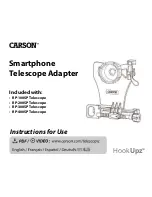
English
Page 9
G E A R C H A N G I N G
• Keep pedaling without effort as
you change gears.
• Should the desired gear not
engage immediately, stop
pedaling for a short moment.
• Change gears in time before
going uphill.
B R A K I N G
When riding down a long and
steep slope it is absolutely
necessary to apply also the
second brake (front wheel brake)
alternately, to allow the rear brake
to cool down.
Bicycles equipped with i-BRAKE:
please read the i-BRAKE instruc-
tion manual.
Version with coaster brake:
Caution:
Heating the coaster brake too
severely can lead to loss of
lubricant, causing too sharp
a braking action. In such case
please contact your dealer.
Version with drum brake:
• The drum brake can be
controlled very precisely and
provides very effective braking
deceleration compared with
conventional bicycles brakes.
However the drum brake only
resches maximum braking
power after a certain breaking in
period.
• To get used to the new brake,
operate the brake lever carefully
to acquire a feel for the drum
brake’s deceleration.
• Do not rinse hub with benzine,
petroleum etc. as this could
produce impurities in the
brakepads.
Caution:
•
The brake anchor plate must be
replaced if oil or other sub-
stances containing grease get
into the brake pads. Oily brake
pads reduce braking effect and
cause the brake to fail comple-
tely. This may result in acci-
dents with extremely serious
injuries.
•
If the bicycle is left standing for
long periods, surface rust in the
brake drum may increase bra-
king effect. For this reason,
start by braking gently a few
times the next time the bicycle
is used to remove the surface
rust. This will prevent the brake
from locking suddenly.
•
Do not touch hub after
cycling - risc of burning.
Operation
Summary of Contents for P5 8/2005 40 Seiten
Page 1: ...N O 0 5 6 8 1 2 2 0 2 0 ...





























